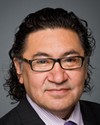Mr. Speaker, I am proud to rise to speak to and declare my support for Bill S-8, the safe drinking water for first nations act.
The proposed legislation is based on a thorough review of the considerable amount of evidence available, including numerous reports and studies and testimony provided to parliamentary committees.
I believe that anyone who consulted this material would reach the inescapable conclusion that Bill S-8 must be enacted for Canada to make lasting progress on the issue of safe drinking water in first nations communities.
It is my hope that Canadians do not base their opinions of Bill S-8 on other sources of information, such as the popular media or views expressed by various interest and advocacy groups. Unfortunately, some of these sources present false or misleading information.
In my remarks today, I will identify and disprove many common myths about Bill S-8. The first myth is that the Government of Canada did not consult first nations prior to introducing Bill S-8. This could not be further from the truth. When we examine the facts, we will see that an extensive engagement and consultation process has been under way for more than seven years. Furthermore, this effort would only continue once Bill S-8 has passed, as government and first nations officials would work together to design and implement regulations.
Here are the relevant facts. In 2006, our government, working with the Assembly of First Nations, established an expert panel to hold public hearings to examine potential regulatory options. More than 110 individuals presented to the panel. Another two dozen submitted written reports. Almost all of the submissions and presentations came from first nations groups.
In April 2007, we held a joint workshop together with the Assembly of First Nations and its technical water expert group to engage in the proposed options for regulations and identify any challenges or issues.
In early 2009, we conducted a series of 13 engagement sessions with first nations communities and organizations and with provincial and territorial groups. Of the approximately 700 participants, more than 540 were members of first nations.
In September 2009, government officials met with first nations chiefs and organizations to discuss some of the specific issues raised during the engagement sessions. Starting in October 2010, a series of without prejudice discussions continued for another full year with first nations organizations, and that collaboration continues today. Clearly, consultation has taken place.
A second pervasive myth about Bill S-8 is that it would negatively impact aboriginal and treaty rights. The truth is, however, that this is not the case. Bill S-8 includes a carefully crafted non-derogation clause. In essence, the non-derogation clause included in Bill S-8 would not prevent the government from justifying a derogation or abrogation of aboriginal treaty rights if it is necessary to ensure safety of first nations drinking water.
We believe this clause effectively balances the need to respect aboriginal treaty rights under section 35 of the Constitution Act, 1982, and the need to protect human health.
A third myth is that the Government of Canada would not provide first nations with the money needed to abide by new regulations governing water. Once again, this is absolutely false. Between 2006 and 2014, our government will have invested approximately $3 billion in water and waste water infrastructure in first nations communities.
Last year's economic action plan alone committed $330.8 million over two years to build and renovate on-reserve water infrastructure, and our government has reiterated on multiple occasions in this House, before committee and in writing to every chief in Canada our commitment to provide ongoing financial support for drinking water.
Instead of focusing on what Bill S-8 would not do, members should focus more on what it would do. The bill proposes to finally create a mechanism to develop regulations in collaboration with first nations. Until regulations are drafted, it is impossible to know exactly how much money first nations would need to be able to comply with them. This is precisely why strong collaboration is central to this government's strategy to ensure safe drinking water for first nations.
Our government would continue to provide funding for first nations for their need to participate in a process to design, implement and comply with regulations.
Another myth put forward is that Bill S-8 would incorporate provincial and territorial regulations without adaptations and would give authority to the provincial or territorial governments.
Once again, this is false. Building on and adapting to provincial and territorial regulatory frameworks would not give provinces or territories control over drinking water and waste water systems on first nations lands. Rather it would produce federal regulations that are comparable to provincial-territorial regulations and provide first nations communities and municipalities with opportunities to work together in areas such as training and new technologies.
Adapting provincial and territorial regulations would ensure comparability with existing, well-understood regulations, thus increasing certainty about regulatory standards for users and operators of drinking water and waste water systems. This would allow the government and first nations to use existing provincial and territorial water regulations as a starting point to identify areas that could be used as federal regulations and to adapt them according to the needs of first nations.
Bill S-8 would lead to the establishment of a series of regional regulatory regimes. Each of these regimes would be based on relevant provincial or territorial regulations, but the regulations would be adapted to meet the particular needs and circumstances of first nations communities and would be developed and finalized with first nations.
Closely tied to this myth is another misconception that Bill S-8 would impose provincial or territorial jurisdiction on first nations. In reality, there is nothing in Bill S-8 that would give provinces or territories control over drinking water and waste water systems on first nations lands. The proposed legislation would create federal regimes that use provincial or territorial regulations as a template. That would inspire opportunities for collaboration among first nations and neighbouring communities and municipalities.
Some critics contend that first nations would have no input into what the regulations developed under Bill S-8 would contain. The truth is exactly the opposite. First nations would have a great deal of input into the development of regulations. Our government would work in partnership with first nations and other groups, such as provincial agencies, to develop federal regulations and standards. The regulations would be based on meeting the real-world challenges of providing safe drinking water in a particular region. This approach works. The Atlantic Policy Congress has already been working with government officials on regulatory development. These collaborations will be the foundation of regulations developed under Bill S-8.
The next myth is that Bill S-8 would somehow prevent first nations from initiating and enacting their own regulations, policies and laws on drinking water. There is nothing in Bill S-8 that would take away a first nation's authority to create bylaws under paragraph 81(1)(l) of the Indian Act. In fact, it is possible that a first nation's bylaw could supersede regulations created under Bill S-8. This would occur if the first nation's bylaw established a comparable or superior level of health and safety. Bill S-8 would also allow for the use of existing first nations bylaws, if appropriate.
Finally, there is the myth that Bill S-8 would somehow expose first nations to liability issues. However, regulations developed from this proposed act could add protections against liability by establishing what the limits on liability would be for all parties involved, including first nations. Regulations would define the roles and legal responsibilities of all parties, and in the process, clarify responsibilities related to drinking water. The best options would be developed to address the roles and responsibilities of the various stakeholders by region, because as was said previously by my friend from Chilliwack—Fraser Canyon, there is no one-size-fits-all or cookie-cutter approach. We have 631 first nations, and many of them have unique circumstances.
I call on opposition members to start listening to the facts on Bill S-8. I could say that they are hard of hearing, but that would not be true. I would say that they are probably hard of listening. We would like them to listen to the facts on Bill S-8 rather than to the many myths. If they do this, I am confident that they will not be able to vote against Bill S-8—hope springs eternal—and will finally agree that first nations deserve safe drinking water.








